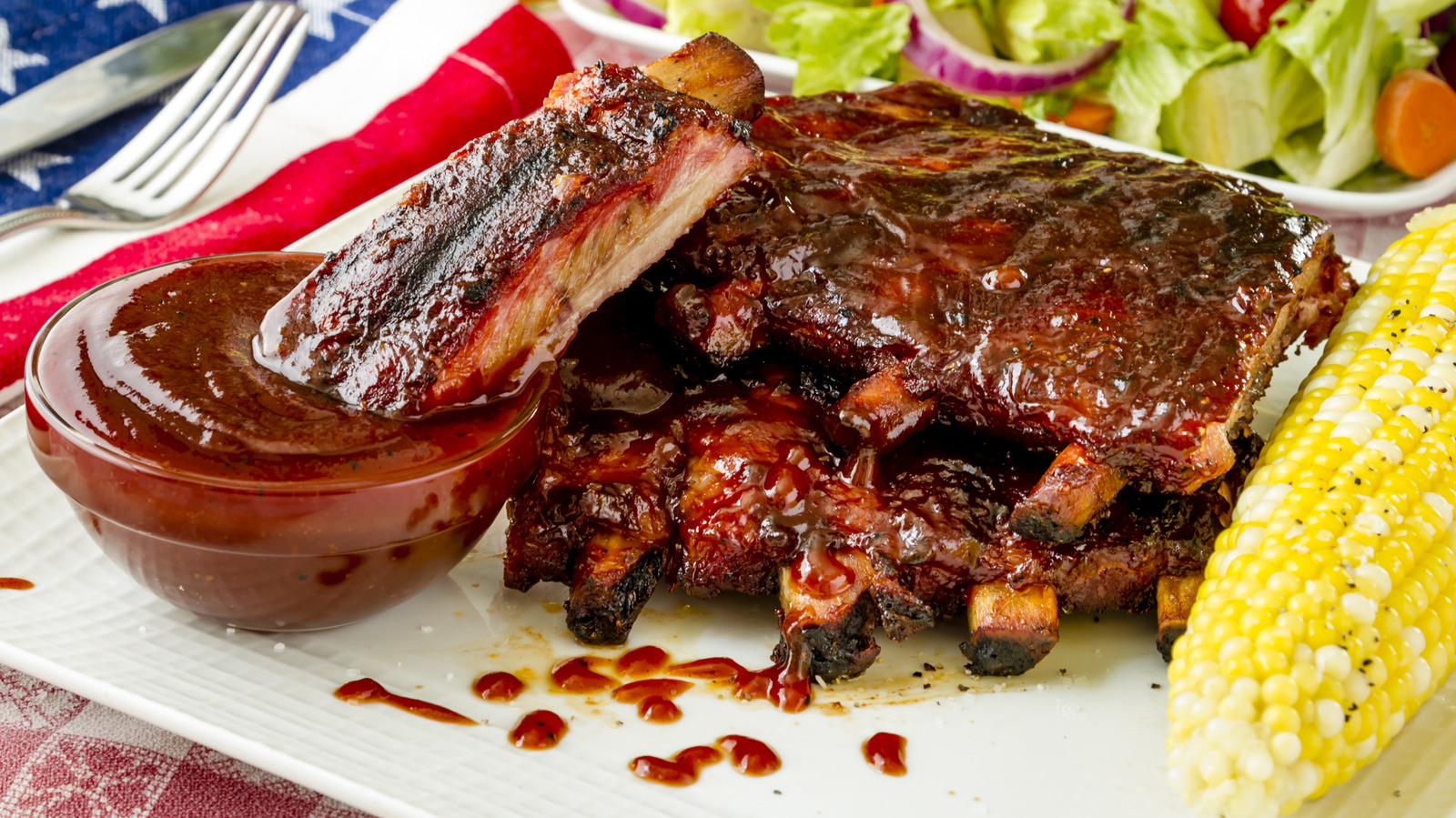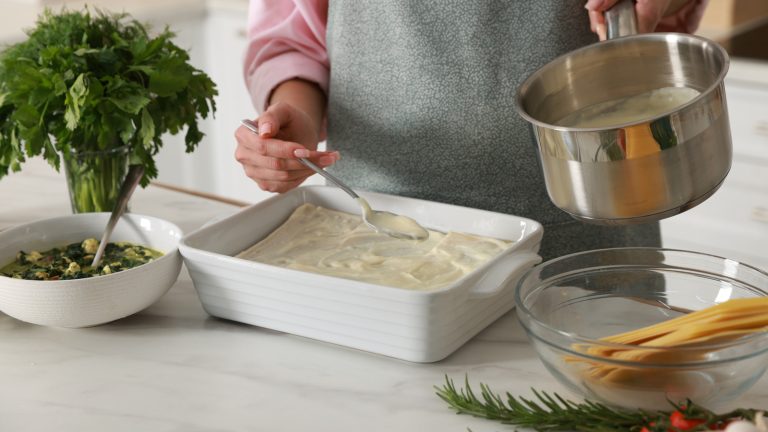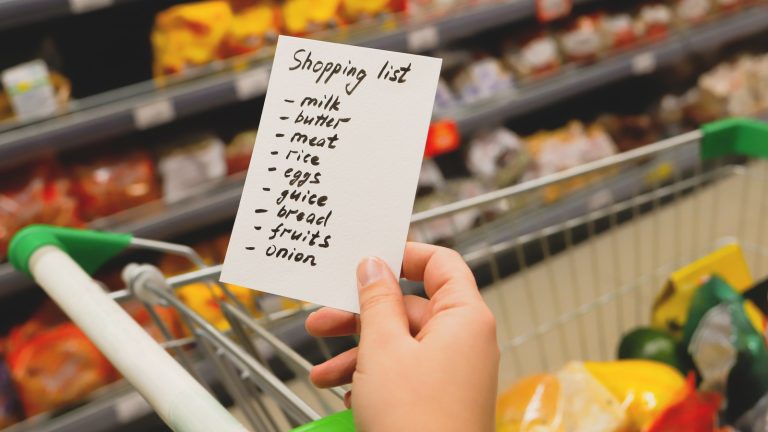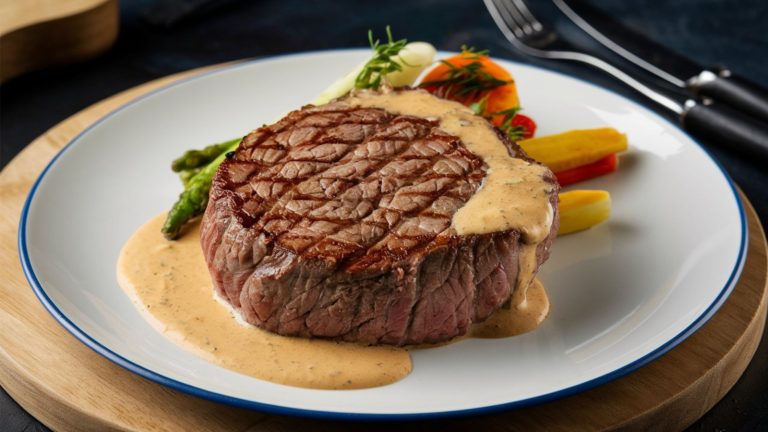We may receive a commission on purchases made from links.
Being a food lover sometimes means getting into the nitty gritty of culinary terms. Whether it’s to help you become a better home cook or a more knowledgeable diner, understanding the difference between seemingly similar ingredients or dishes will help you navigate a recipe or menu. The sauce category in particular tends to cause a lot of confusion, with terms like au jus, reduction, and demi-glace making the rounds. So when you’re faced with a choice of a bourbon sauce and a bourbon glaze, which one is right for your dish?
The difference between the two applies to sauces and glazes in general, not just the bourbon variety. A bourbon glaze is applied to food during the cooking process to give it a shiny coating and an added layer of flavor, while a bourbon sauce is cooked separately and served alongside the dish or drizzled over it as a finishing touch. Though both can contain similar ingredients, a glaze will usually be both thicker and sweeter, while a bourbon sauce will have a looser texture and a more balanced taste – perfect for consuming in larger quantities. Although you might associate bourbon sauces and glazes with barbecued meats, both have their place on sweet and savory foods, you just need to know how to use them.
What is a bourbon sauce?
It’s possibly a slight oversimplification to say that a bourbon sauce is any sauce made with bourbon. But when comparing it to a bourbon glaze, it can be defined as a sauce that accompanies the food when served, rather than one that’s part of the cooking process.
A bourbon barbecue sauce is the most similar to a bourbon glaze. It uses many of the same ingredients, including ketchup, brown sugar, Worcestershire sauce and mustard, but has a lower sugar content and generally a thinner consistency and is often used as a dipping sauce. The sauce is fully cooked before serving, which burns off most of the alcohol and allows you to balance the flavors. If you’re more in the market for buying rather than making a bourbon barbecue sauce, we ranked Stubb’s Hickory Bourbon Bar-B-Q sauce (available on Amazon) as our favorite brand. Bourbon pan sauce is another popular way to incorporate bourbon into your cooking, and a delicious accompaniment to a steak or roast meat. Simply deglaze your cooking pan with bourbon, add seasoning and cream and simmer to thicken.
Let’s not forget dessert. Bourbon’s natural notes of vanilla and caramel make it an ideal pairing with a wide range of sweet treats, particularly when you use a cream base for your bourbon sauce. With a bourbon that pairs well with desserts, you can also make a simple bourbon caramel that can go on anything from ice cream to cake.
What is a bourbon glaze?
Technically speaking, a glaze is a type of sauce, but one with a more specific purpose. As the name suggests, it provides a shiny and often sticky coating for meats (like in our bourbon-glazed chicken wings recipe), vegetables, and desserts. Regardless of whether you’re adding it to sweet or savory dishes, a bourbon glaze requires a good amount of sugar, honey, or maple syrup. It’s this sugar content that helps the glaze stick to the food and caramelizes during cooking to give a glossy finish.
A bourbon glaze for meats and vegetables can be as simple as combining bourbon and cola or bourbon, molasses, and dijon mustard, which can be applied to directly to the meat before barbecuing. But other recipes, like this bourbon glazed salmon, require a more complex glaze that is first reduced to a thick consistency before brushing on.
Bourbon glazes for desserts are even simpler. Simmer brown sugar and bourbon until thick for an upgrade to barbecued fruit, with optional pepper or chili to balance out the sweetness. Pastries are another prime candidate for a shiny, sticky finish. These bourbon glazed donuts just require bourbon, powdered sugar and milk for an adult twist on a classic treat.







